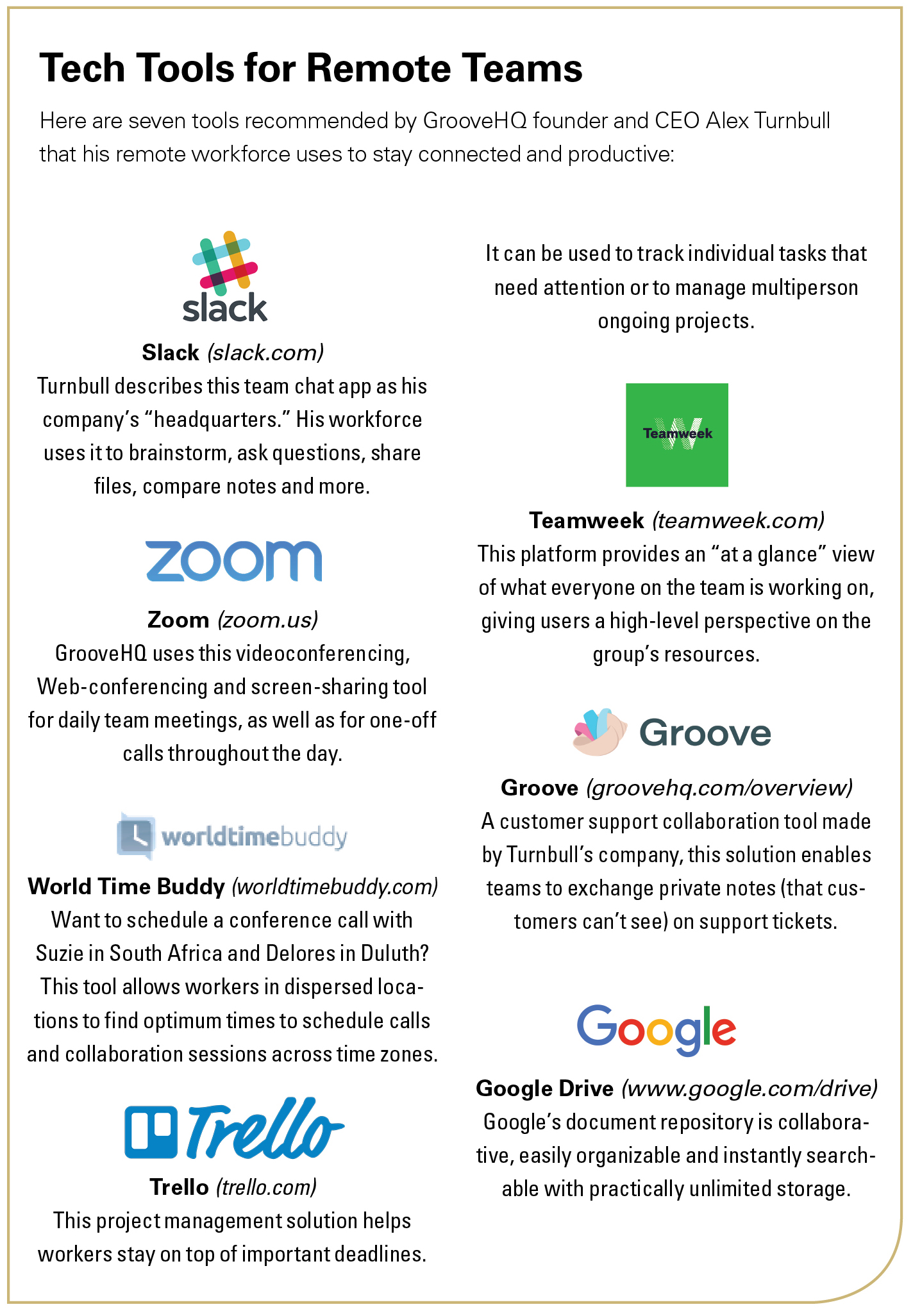How to Use Technology to Support Remote Teams
The right training and technology can ensure that offsite workers don't feel left out.

Remote work has its advantages—flexibility, low or no overhead costs, and a greater pipeline of applicants from which to hire. But it also has its drawbacks—less interaction, concern about whether employees are staying on task and communication challenges. Because dispersed employees may work in different cities, states, countries and time zones, they rely heavily on technology to connect and collaborate with others.
Before his software company’s workforce became 100 percent remote, Alex Turnbull, founder and CEO of GrooveHQ, described an office where workers were there but not always present. While people generally worked well together when they needed to, many tuned out with earbuds or headphones as they tackled their day-to-day tasks. Turnbull didn’t see why they needed to be in the same room all the time.
Relinquishing a physical corporate office eliminated costly real estate expenses, improved work/life balance and expanded the company’s capacity to recruit top talent more quickly. But culture suffered until the staff figured out ways to maintain a sense of community through virtual and in-person meetings.As a strategy to find the best remote employees, some companies deploy in the hiring process the same technology workers are likely to use on the job. For example, conducting virtual interviews can give employers insight into how the candidate approaches remote work, says Neil Patel, co-founder of Crazy Egg, a Seattle-based analytics company.
It’s also important for company leaders to use technology themselves and provide appropriate training to the entire workforce, says Kevin Eikenberry, founder of The Kevin Eikenberry Group and co-founder of the Remote Leadership Institute in Indianapolis.
“From the ubiquitous e-mail to how to have meetings, everything is mediated through technology,” he says.
That’s why he asks new virtual team members to initiate 15- to 30-minute get-to-know-you phone conversations with each existing team member. The calls foster collaboration and take some of the pressure off the manager to be the sole contact person.
- Just-in-time training platforms.
- Online collaboration solutions.
- Web-based performance management systems that evaluate employees’ accomplishments, not the hours they spend on the job.
- Online recognition platforms.
Tools That Bind
 In the absence of the kind of watercooler conversations that routinely take place in a traditional workplace, teams can find ways to replicate that experience virtually. Zapier, a distributed software company, fosters connectedness with weekly virtual “hangouts” where team members get together just to talk. The company also has a “Pair Buddies” program that randomly pairs teammates for a 10- to 15-minute phone call to enhance a sense of connectedness.
In the absence of the kind of watercooler conversations that routinely take place in a traditional workplace, teams can find ways to replicate that experience virtually. Zapier, a distributed software company, fosters connectedness with weekly virtual “hangouts” where team members get together just to talk. The company also has a “Pair Buddies” program that randomly pairs teammates for a 10- to 15-minute phone call to enhance a sense of connectedness.



